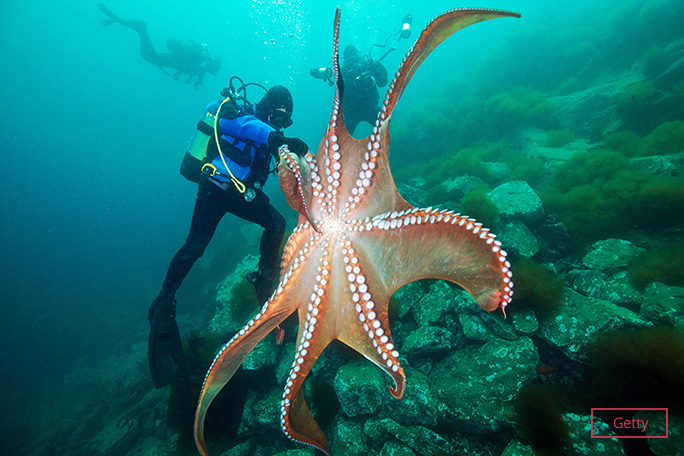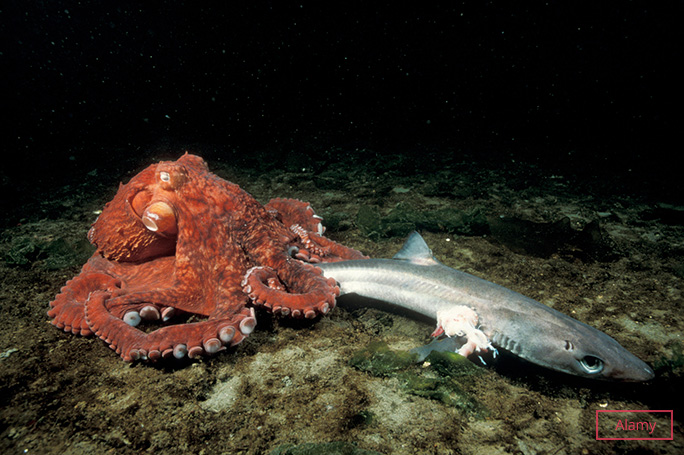In short, octopuses can grow into huge sizes, they display a striking intelligence and can manipulate objects such as toys and open Tupperware containers.
Now that we have your attention, let us introduce you to the giant Pacific octopus (also known as GPO) – the largest octopus in the world.
Living for an average span of 3 to 5 years, this majestic sea creature stands out for its scale: adult specimens usually weigh around 15 kg (33 lb), although larger individuals have been measured at 50 kg (110 lb).





